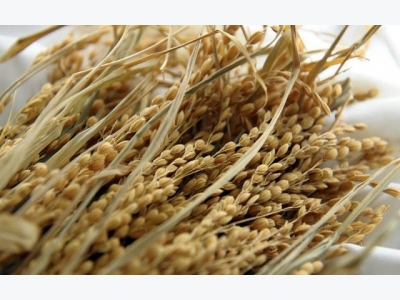New Dry Rice 1.5 initiative launched

Rice researchers from across Australia are leading the charge to achieve a 1.5 tonnes per megalitre water use efficiency.
New research and technology to enable high harvest yields while using less water to grow the crop is the aim of the ‘Dry Rice 1.5’ project, according to AgriFutures (formerly Rural Industry Research and Development Corporation).
AgriFutures rice program manager Michael Beer said the Rice Research & Development Forum held in Yanco last month showed real efficiency gains are possible with the adoption of new technology and innovation.
He said researchers from the NSW Department of Primary Industries, Centre for Regional and Rural Futures Deakin, University of Queensland, Charles Sturt University, and SunRice joined AgriFutures and Rice Extension representatives to ‘‘share knowledge and build collaboration’’.
‘‘Researchers are now using new research techniques to deliver better rice varieties sooner,’’ Mr Beer said.
‘‘The rice breeding and chemistry program has been developing new ways to measure rice cooking and eating quality as well as methods to select for these traits using molecular markers.
‘‘The program is working on the difficult challenge of breeding cold and heat stress tolerance into new varieties through detailed understanding of the physiology of these traits.
‘‘It is focused on breeding high value niche varieties with exceptional agronomic performance and that match market demand for healthier food options.’’
Mr Beer said growers can apply precision crop management using on-farm sensors, automated controllers and remote imagery.
‘‘They will have access to accurate decision support tools and crop growth models with weather forecasting and phenology research.
‘‘Research into overcoming soil constraints and understanding the value of flexible layouts will allow crop rotations to be profitable and sustainable.
‘‘A vital link is a comprehensive extension effort to share knowledge and on-farm application of new technology and innovations amongst growers.
‘‘The 1.5 tonne per megalitre target is the first step in an ongoing plan to increase rice farming water use efficiency and profitability.’’
Related news
 Soc Trang is seeking tech support for its agriculture
Soc Trang is seeking tech support for its agriculture Situated in the lower section of the Hau River and bordering the East Sea, Soc Trang province features a diversified ecosystem, fertile land, and mild climate
 Vegetable and fruit export, import turnover rockets up
Vegetable and fruit export, import turnover rockets up Vegetable and fruit export turnover posted a year on year increase of 47 percent to top $2.3 billion while import doubled the same period last year to hit $1.06
 What are the pros, cons of a national brand for agriculture?
What are the pros, cons of a national brand for agriculture? There has and continues to be broad support and a large degree of talk focused on creating a unified, national brand for produce of Vietnamese agriculture